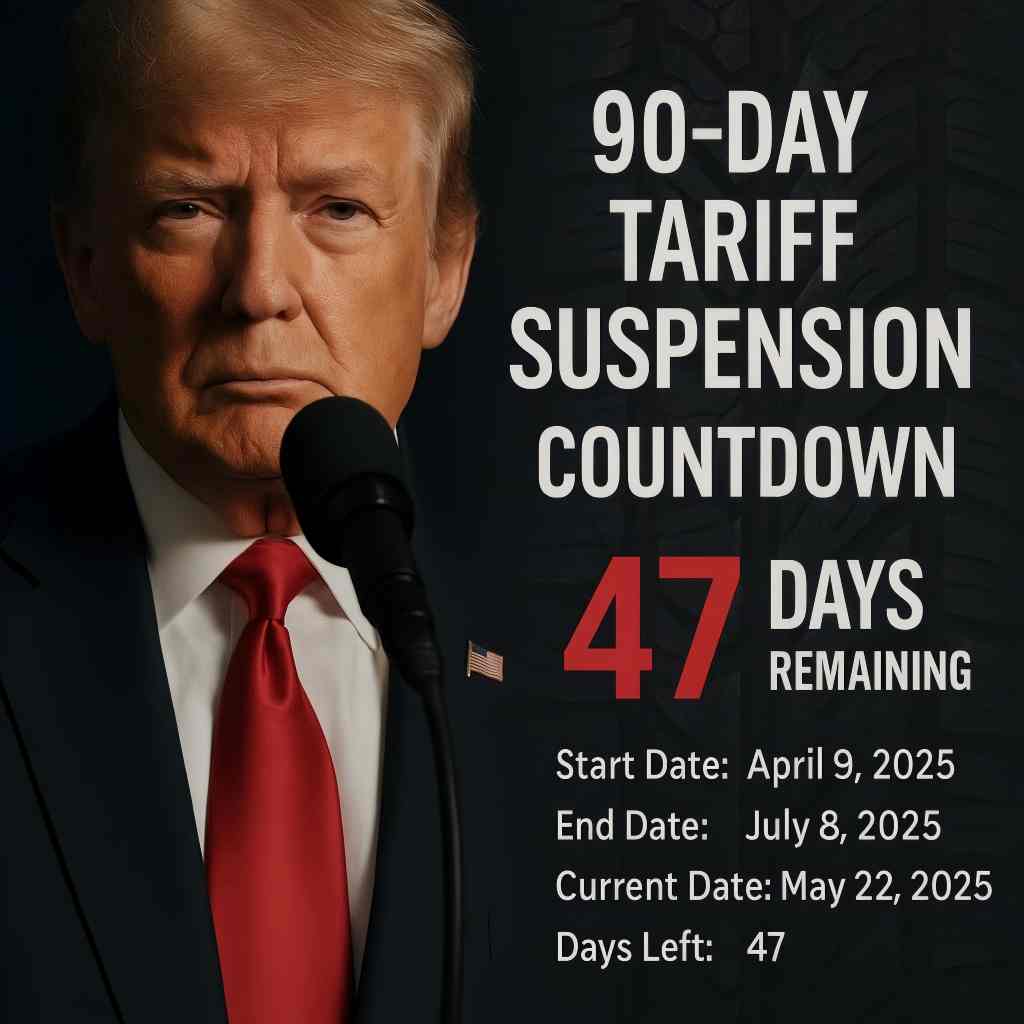
As the 90-day tariff grace period announced by the U.S. government nears its end, tire importers and distributors across the country are bracing for a significant shift in trade dynamics. Originally introduced to provide temporary relief to American businesses following newly announced tariff adjustments on Chinese and Southeast Asian imports, the grace period was a brief window that allowed importers to plan, adjust, and react.
Now, with the expiration date fast approaching, the full weight of the new trade policies is about to be felt — and tire companies must be ready.
1. What Is the 90-Day Grace Period?
The 90-day period was a transitional phase announced by the U.S. Trade Representative’s Office, allowing importers to bring in goods under the pre-existing duty structure before elevated tariffs take full effect. It was widely interpreted as a buffer to soften the immediate impact of tariff hikes on key categories such as vehicle parts, steel products, and commercial truck tires.
For tire importers, particularly those sourcing from Vietnam, Thailand, and China, the grace period served as a final opportunity to clear inventory and secure containers without absorbing the extra 25–50% in duties many fear are coming next.
2. What Happens After the Grace Period Ends?
Once the grace period ends, any shipments entering the United States will be subject to the new tariff rates — which may include reinstated or newly introduced Section 301 tariffs on Chinese goods, and possible escalation of duties on Vietnamese or Thai tires due to ongoing trade reviews.
The direct consequences include:
Increased landed cost per container
Greater pressure on pricing strategy and margin protection
Strain on smaller importers lacking large capital buffers
Possible CBP delays and intensified document scrutiny
For many companies, especially small-to-mid-sized importers like Total Effort Tire Inc., this marks a moment of recalibration.
3. The Broader Impact on the U.S. Tire Market
The ripple effects of higher tariffs will likely be felt across every layer of the tire supply chain:
Retailers and fleet managers may see rising prices, especially for common SKUs such as 11R22.5, 295/75R22.5, and 255/70R22.5.
Distributors will be forced to make difficult decisions regarding stocking, pricing, and risk management.
OEM manufacturers may shift sourcing to Southeast Asia — although even those regions are under growing trade scrutiny.
In the long run, this could accelerate diversification of supply chains, including renewed interest in Latin American production or increased focus on domestic warehousing to hedge against border volatility.
4. TE Tire's Response and Strategy
At Total Effort Tire Inc., we have proactively adapted to these changing conditions:
Front-loaded multiple containers during the grace period to secure competitive pricing.
Strengthened local distribution via our Riverside, CA warehouse for rapid delivery and reduced logistics cost.
Expanded our portfolio to include exclusive access to brands like Lanvigator and our new private label ARESTREK.
Built partnerships with clients based on long-term stability and transparent pricing.
Our approach is simple: stability, supply readiness, and service quality.
5. Final Thoughts
As the 90-day buffer fades into the rearview mirror, the U.S. tire market stands on the verge of a new reality. Companies that are nimble, well-prepared, and customer-focused will weather the transition — and emerge stronger.
Whether you are a repair shop, fleet manager, or wholesale buyer, TE Tire remains your trusted partner for reliable inventory, competitive pricing, and local delivery support.
Need help preparing for the post-tariff landscape?
Contact us today at +1 (909) 971-7378 or visit www.totaltiregroup.com
Follow us on Instagram: @tire.te
Post time:2025-05-28





